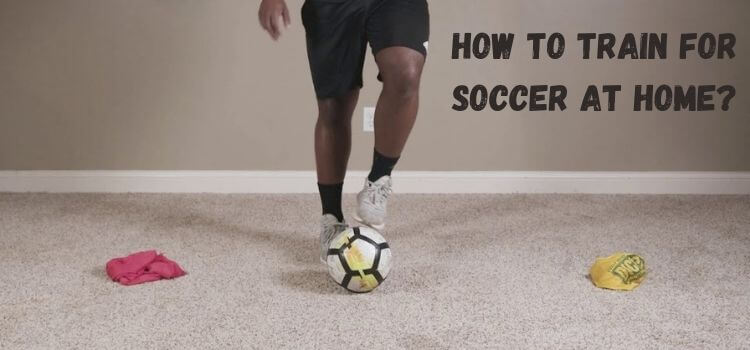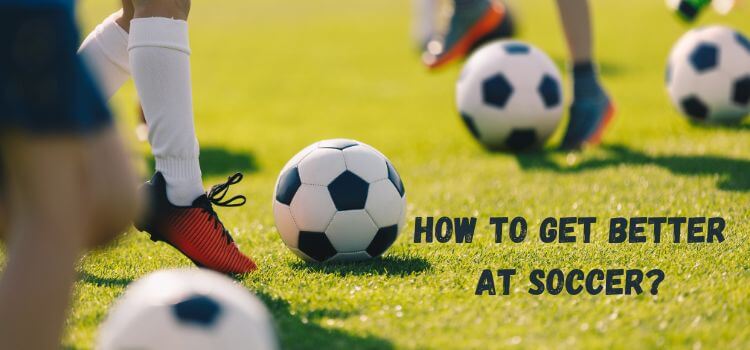As an Amazon Associate, I earn from qualifying purchases
Are you eager to elevate your soccer skills from the comfort of your own home? Whether you’re a seasoned player or just starting, mastering the art of soccer requires consistent training and dedication. In this comprehensive guide on “How to Train for Soccer at Home,” we’ll explore effective techniques and exercises tailored to improve your agility, speed, ball control, and overall performance.
With the right mindset and commitment, you can transform your living space into a training ground that propels you towards your soccer goals. Let’s dive in and unleash your full potential on the field, one drill at a time.

Introduction to Train for Soccer at Home
Soccer, often known as football in many parts of the world, is a sport that requires a combination of skill, agility, strength, and endurance.
While team training sessions are crucial for improvement, there are many ways to enhance your soccer skills from the comfort of your home.
Benefits of Training at Home
Training for soccer at home offers numerous advantages that can significantly contribute to your development as a player:
- It provides unparalleled convenience. You can work on your skills whenever it suits your schedule, eliminating the need to coordinate with teammates or coaches.
- Training at home offers flexibility, allowing you to tailor your workouts to your specific needs and goals.
- It can be cost-effective, as you don’t need to invest in expensive gym memberships or equipment.
Setting Up Your Training Space
Creating an ideal training space at home is essential for maximizing your workouts. Choose an area with enough room to move freely without any obstacles.
Opt for a flat surface like a backyard or a spacious indoor room. As for equipment, you only need a little to get started. Essential items like cones, a soccer ball, resistance bands, and a wall for rebounds are sufficient for most exercises.
Warm-up Exercises
Before diving into intense workouts, it’s crucial to warm up your muscles properly to prevent injuries. Dynamic stretches like leg swings, arm circles, and high knees help increase blood flow and flexibility, preparing your body for the upcoming activities.
Strength and Conditioning Workouts
Building strength and endurance is fundamental for soccer players. Bodyweight exercises such as squats, lunges, push-ups, and planks effectively develop overall strength.
Incorporating resistance bands into your workouts adds an extra challenge and helps target specific muscle groups essential for soccer movements.
Agility Drills
Agility is a key component of soccer, and practicing agility drills at home can significantly improve your performance on the field.
Set up cones in various patterns and perform drills like shuttle runs, lateral shuffles, and zigzag sprints to enhance your agility and footwork.
Ball Control and Dribbling Drills
Improving ball control and dribbling skills is essential for maintaining possession and creating scoring opportunities. Utilize a wall for passing and receiving drills, focusing on controlling the ball with different parts of your body.
Set up cones to practice dribbling around obstacles, enhancing your close ball control and agility.
Passing and Receiving Practice
Mastering passing and receiving is crucial for effective teamwork on the soccer field.
Use a wall for passing drills to hit specific targets with accuracy and pace. Solo-passing exercises can also improve technique and ball control.
Shooting Practice
Scoring goals requires precision and power, making shooting practice vital for soccer players. Set up targets, use a goal if available, and practice shooting from various distances and angles.
Focus on proper technique, including body positioning, striking the ball cleanly, and following through with your shot.
Endurance Training
Soccer matches are often physically demanding, requiring players to maintain high endurance throughout the game.
Incorporate interval training and running routines into your workouts to improve cardiovascular fitness and stamina, simulating the demands of a match.
Cool-down and Recovery
Proper cooling down after intense workouts can reduce muscle recovery and soreness. Perform static stretches targeting major muscle groups, holding each stretch for 15-30 seconds to improve flexibility and promote relaxation.
Mental Conditioning
In addition to physical training, mental conditioning plays a significant role in soccer performance. Utilize visualization techniques to rehearse game scenarios and visualize success on the field mentally.
Set realistic goals for yourself, both short-term and long-term, to stay focused and motivated throughout your training journey.
Tracking Progress
Keeping track of your progress is essential for identifying areas of improvement and staying motivated. Maintain a training journal to record your workouts, goals, and achievements.
Set benchmarks and periodically assess your performance to measure your growth as a player.
Staying Motivated
Maintaining motivation can be challenging, especially when training alone. To keep workouts interesting, incorporate various exercises and drills into your routine.
Set specific, attainable goals, whether improving a skill or achieving a personal milestone.
Conclusion: Train at Home to Play Soccer
Training for soccer at home is convenient and highly effective for improving your skills and performance on the field. By incorporating a combination of strength and conditioning workouts, agility drills, ball control exercises, and mental conditioning techniques into your routine, you can take your game to the next level from the comfort of your own home.
Frequently Asked Questions (FAQs)
Absolutely! With dedication and the right approach, training at home can significantly enhance your soccer skills.
Not at all. Essential items like a soccer ball, cones, and resistance bands are sufficient for most exercises.
Consistency is key. Aim to train at least 3-4 times weekly, focusing on different aspects of your game each session.
Yes, agility drills and interval training can help improve your agility, speed, and overall athleticism.
Mix up your routine, set new goals, or seek inspiration from soccer-related content online or through social media platforms to reignite your motivation and keep you focused on your training goals.
As an Amazon Associate, I earn from qualifying purchases


